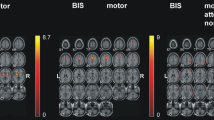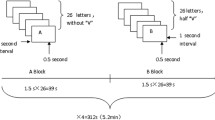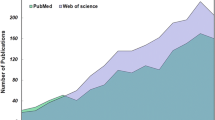Abstract.
Behavioral disinhibition in Go/No–Go task is thought to be associated with impulsiveness in humans. Recent imaging studies showed that neural circuits involving diverse areas of the frontal cortex and other association cortex sites such as the parietal cortex are implicated in the inhibition of response during No–Go trials. The aim of the present study was to investigate the association between regional cerebral activation during No–Go trials and impulsiveness. Seventeen righthanded healthy volunteers participated in the study. We used functional magnetic resonance imaging to measure the brain activation during a Go/No–Go task. The Barratt Impulsiveness Scale, 11th version (BIS–11) was used to measure impulsiveness. Activated regions included the right middle frontal gyrus and the inferior parietal lobe, which is consistent with previous neuroimaging studies. A negative correlation was observed between the motor impulsiveness of BIS–11 and No–Gorelated activation in the right dorsolateral prefrontal cortex (RDLPFC). Our results suggest that the RDLPFC is the area most sensitive to differences in individual motor impulsiveness and its activity may be an indicator of the individual capacity for response inhibition.
Similar content being viewed by others
References
af Klinteberg B, Schalling D, Edman G, Oreland L, Asberg M (1987) Personality correlates of platelet monoamine oxidase (MAO) activity in female and male subjects. Neuropsychobiology 18:89–96
Barratt ES (1994) Impulsiveness and aggression. In: Monahan J, Steadman HJ (eds) Violence and mental disorder: developments in risk assessment, Chicago. University of Chicago Press, pp 61–79
Barratt ES (1985) Impulsiveness subtraits, arousal and information processing. In: Spence JT, Itard CE (eds) Motivation, emotion and personality. North Holland: Elsevier Science, pp 137–146
Beauregard M, Levesque J, Bourgouin P (2001) Neural correlates of conscious self-regulation of emotion. J Neurosci 21:RC165
Brass M, Zysset S, von Cramon DY (2001) The inhibition of imitative response tendencies. Neuroimage 14:1416–1423
Braver TS, Barch DM, Gray JR, Molfese DL, Snyder A (2001) Anterior cingulate cortex and response conflict: effects of frequency, inhibition and errors. Cereb Cortex 11:825–836
Bunge SA, Ochsner KN, Desmond JE, Glover GH, Gabrieli JD (2001) Prefrontal regions involved in keeping information in and out of mind. Brain 124:2074–2086
Butters N, Butter C, Rosen J, Stein D (1973) Behavioral effects of sequential and one-stage ablations of orbital prefrontal cortex in the monkey. Exp Neurol 39:204–214
Carrillo-de-la-Pena MT, Otero JM, Romero E (1993) Comparison among various methods of assessment of impulsiveness. Percept Mot Skills 77:567–575
Casey BJ, Forman SD, Franzen P, Berkowitz A, Braver TS, Nystrom LE, Thomas KM, Noll DC (2001) Sensitivity of prefrontal cortex to changes in target probability: a functional MRI study. Hum Brain Mapp 13:26–33
Casey BJ, Trainor RJ, Orendi JL, Schubert AB, Nystrom LE, Giedd JN, Castellanos FX, Haxby JV, Noll DC, Cohen JD, Forman SD, Dahl RE, Rapoport JL (1997) A developmental functional MRI study of prefrontal activation during performance of a go/no-go task. J Cogn Neurol 9:835–847
Crammond DJ (1997) Motor imagery: never in your wildest dream. Trends Neurosci 20:54–57
de Zubicaray GI, Andrew C, Zelaya FO, Williams SC, Dumanoir C (2000) Motor response suppression and the prepotent tendency to respond: a parametric fMRI study. Neuropsychologia 38:1280–1291
Decety J (1996) The neurophysiological basis of motor imagery. Behav Brain Res 77:45–52
Dickman SJ (1990) Functional and dysfunctional impulsivity: personality and cognitive correlates. J Pers Soc Psychol 58:95–102
Evenden JL (1998) The pharmacology of impulsive behaviour in rats IV: the effects of selective serotonergic agents on a paced fixed consecutive number schedule. Psychopharmacology (Berl) 140:319–330
Fallgatter AJ, Herrmann MJ (2001) Electrophysiological assessment of impulsive behavior in healthy subjects. Neuropsychologia 39:328–333
Friston KJ, Holmes AP, Worsley KJ, (1999) How many subjects constitute a study? Neuroimage 10:1–5
Fuster JM (1989) The prefrontal cortex: Anatomy, Physiology and Neuropsychology of the Frontal Lobe. Raven Press, New York, p 110
Garavan H, Ross TJ,Murphy K, Roche RA, Stein EA (2002) Dissociable executive functions in the dynamic control of behavior: inhibition, error detection, and correction. Neuroimage 17: 1820–1829
Garavan H, Ross TJ, Stein EA (1999) Right hemispheric dominance of inhibitory control: an event-related functional MRI study. Proc Natl Acad Sci USA 96:8301–8306
Godefroy O, Rousseaux M (1996) Divided and focused attention in patients with lesion of the prefrontal cortex. Brain Cogn 30:155–174
Hanakawa T, Immisch I, Toma K, Dimyan MA, Van Gelderen P, Hallett M (2003) Functional properties of brain areas associated with motor execution and imagery. J Neurophysiol 89:989–1002
Iversen SD, Mishkin M (1970) Perseverative interference in monkeys following selective loss of the inferior prefrontal convexity. Exp Brain Res 11:376–386
Jaeggi SM, Seewer R, Nirkko AC, Eckstein D, Schroth G, Groner R, Gutbrod K (2003) Does excessive memory load attenuate activation in the prefrontal cortex? Load-dependent processing in single and dual tasks: functional magnetic resonance imaging study. Neuroimage 19:210–225
Kawashima R, Satoh K, Itoh H, Ono S, Furumoto S, Gotoh R, Koyama M, Yoshioka S, Takahashi T, Takahashi K, Yanagisawa T, Fukuda H (1996) Functional anatomy of GO/NO-GO discrimination and response selection – A PET study in man. Brain Research 728:79–89
Konishi S, Nakajima K, Uchida I, Kikyo H, Kameyama M, Miyashita Y (1999) Common inhibitory mechanism in human inferior prefrontal cortex revealed by event-related functional MRI. Brain 122:981–991
Lancaster JL, Woldorff MG, Parsons LM, Liotti M, Freitas CS, Rainey L, Kochunov PV, Nickerson D, Mikiten SA, Fox PT (2000) Automated Talairach atlas labels for functional brain mapping. Hum Brain Mapp 10:120–131
Levesque J, Eugene F, Joanette Y, Paquette V, Mensour B, Beaudoin G, Leroux JM, Bourgouin P, Beauregard M (2003) Neural circuitry underlying voluntary suppression of sadness. Biol Psychiatry 53:502–510
Liddle PF, Kiehl KA, Smith AM (2001) Event-related fMRI study of response inhibition. Hum Brain Mapp 12:100–109
Lotze M, Montoya P, Erb M, Hulsmann E, Flor H, Klose U, Birbaumer N, Grodd W (1999) Activation of cortical and cerebellar motor areas during executed and imagined hand movements: an fMRI study. J Cogn Neurosci 11:491–501
Luders HO, Dinner DS, Morris HH, Wyllie E, Comair YG (1995) Cortical electrical stimulation in humans. The negative motor areas. Adv Neurol 67:115–129
Milich R, Kramer J (1984) Reflections on impulsivity: an empirical investigation of impulsivity as a construct. Advances in Learning and Behavioral Disabilities 3:57–94
Moeller FG, Barratt ES, Dougherty DM, Schmitz JM, Swann AC (2001) Psychiatric aspects of impulsivity. Am J Psychiatry 158:1783–1793
Monterosso J, Ainslie G (1999) Beyond discounting: possible experimental models of impulse control. Psychopharmacology (Berl) 146:339–347
Oldfield RC (1971) The assessment and analysis of handedness: the Edinburgh inventory. Neuropsychologia 9:97–113
Patton JH, Stanford MS, Barratt ES (1995) Factor structure of the Barratt impulsiveness scale. J Clin Psychol 51:768–774
Paulsen K, Johnson M (1980) Impulsivity: a multidimensional concept with developmental aspects. J Abnorm Child Psychol 8:269–277
Pliszka SR, Liotti M, Woldorff MG (2000) Inhibitory control in children with attention-deficit/hyperactivity disorder: event-related potentials identify the processing component and timing of an impaired right-frontal response-inhibition mechanism. Biol Psychiatry 48:238–246
Porro CA, Cettolo V, Francescato MP, Baraldi P (2000) Ipsilateral involvement of primary motor cortex during motor imagery. Eur J Neurosci 12:3059–3063
Porro CA, Francescato MP, Cettolo V, Diamond ME, Baraldi P, Zuiani C, Bazzocchi M, di Prampero PE (1996) Primary motor and sensory cortex activation during motor performance and motor imagery: a functional magnetic resonance imaging study. J Neurosci 16:7688–7698
Reist C, Helmeste D, Albers L, Chhay H, Tang SW (1996) Serotonin indices and impulsivity in normal volunteers. Psychiatry Res 60:177–184
Rubia K, Russell T, Overmeyer S, Brammer MJ, Bullmore ET, Sharma T, Simmons A, Williams SC, Giampietro V, Andrew CM, Taylor E (2001) Mapping motor inhibition: conjunctive brain activations across different versions of go/no-go and stop tasks. Neuroimage 13:250–261
Rypma B, Berger JS, D’Esposito M (2002) The influence of working-memory demand and subject performance on prefrontal cortical activity. J Cogn Neurosci 14:721–731
Sasaki K, Gemba H, Tsujimoto T (1989) Suppression of visually initiated hand movement by stimulation of the prefrontal cortex in the monkey. Brain Res 495:100–107
Shulman KI (1997) Disinhibition syndromes, secondary mania and bipolar disorder in old age. J Affect Disord 46:175–182
Someya T, Sakado K, Seki T, Kojima M, Reist C, Tang SW, Takahashi S (2001) The Japanese version of the Barratt Impulsiveness Scale, 11th version (BIS-11): its reliability and validity. Psychiatry Clin Neurosci 55:111–114
Starkstein SE, Robinson RG (1997) Mechanism of disinhibition after brain lesions. J Nerv Ment Dis 185:108–114
Swann AC, Bjork JM, Moeller FG, Dougherty DM (2002) Two models of impulsivity: relationship to personality traits and psychopathology. Biol Psychiatry 51:988–994
Walderhaug E, Lunde H,Nordvik JE, Landro NI,Refsum H,Magnusson A (2002) Lowering of serotonin by rapid tryptophan depletion increases impulsiveness in normal individuals. Psychopharmacology (Berl) 164:385–391
Author information
Authors and Affiliations
Corresponding author
Rights and permissions
About this article
Cite this article
Asahi, S., Okamoto, Y., Okada, G. et al. Negative correlation between right prefrontal activity during response inhibition and impulsiveness: A fMRI study. European Archives of Psychiatry and Clinical Neurosciences 254, 245–251 (2004). https://doi.org/10.1007/s00406-004-0488-z
Received:
Accepted:
Issue Date:
DOI: https://doi.org/10.1007/s00406-004-0488-z




